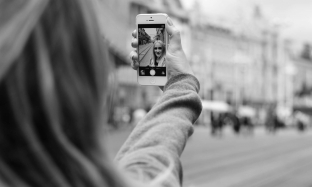Today, smartphones replace for a modern person a notebook, a computer, a video camera, and even a camera. Many teenagers can no longer go a day without taking a picture of themselves. This process was given the name – "selfie". Psychologists say that self-mania threatens the mental health of the younger generation. In the past, each shot was an event carefully crafted to fit everything you wanted into 36 frames of film. Photos taken on the phone rarely end up in albums, while losing their value. There is a devaluation of the value of images. How does selfie affect the human psyche? Why is self-mania dangerous?
What life processes are hindered by self-mania?
Massive and often thoughtless photography of everything leads to the fact that a person does not remember what is happening around him. Read more negative effects of selfies on estet-portal.com. At Harvard University, a psychologist conducted an experiment in which students were taken to a museum and asked to memorize exhibits. At the same time, it was allowed to use any equipment. When evaluating the results, it turned out that those students who did not take pictures in the museum remembered much more exhibits than those who took pictures of them. Students who looked at the exhibits with their own eyes remembered not only the appearance, but also all the details, as well as the history of art.
What threatens the development of self-mania:
- Danger of self-mania for family and team relationships;
- Physical health hazard;
- Mental health hazard with development of mental disorders;
- The development of narcissism, which affects relationships with others.
What is the danger of developing self-mania?
In recent years, self-mania has gained momentum. Selfies are taken not only by celebrities, but also by officials, ordinary workers, students and even schoolchildren. This way of narcissism, according to psychologists, is not at all harmless.
Scientists-psychologists say that selfie is a kind of narcissism and refers to psychological deviations. Self-mania leads to problems both at work and in the family. Passion for one's person does not go unnoticed in relationships with colleagues, loved ones and family members, turning into addiction.
People spend a lot of time doing "good" selfies, post pictures on social networks and wait for discussion and positive comments. In reality, it has been noticed that the environment begins to treat the selfieman differently due to the endless stream of photos on social networks.
Self-mania can lead to sad consequences. So, a teenager from England tried to commit suicide because of a bad selfie. The student took selfies in the morning, taking up to 80 shots in just one morning. Gradually, the teenager began to see in this his meaning of life.

What psychological disorder develops in the background of self-mania?
Psychiatrists claim that against the background of a worsening mental disorder, body dysmorphophobia appears due to self-mania. Body dysmorphophobia is a disorder in which a person is very concerned about their appearance and body, experiencing a feeling of anxiety due to its defects or features. More often, teenagers find flaws in themselves, and they often see them in pictures. Psychiatrists say that with the advent of selfies and the development of self-mania, the number of patients with body dysmorphophobia has doubled.
So selfie obsession is today a psychological disorder called selfie mania. The first stage of the disease is determined if a person takes about three photos a day without posting to social networks, the second stage is determined when a person takes and posts about six pictures a day.
Selfie mania is more prone to people with hysterical character accentuation, that is, women. Demonstrative behavior is inherent in women, which is associated with the desire to please men.
Psychologists say that timely psychological assistance can prevent the further spread of self-mania and the development of psychological problems.






Add a comment